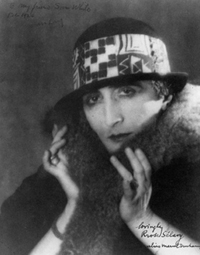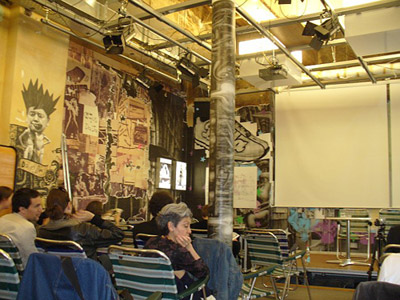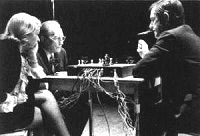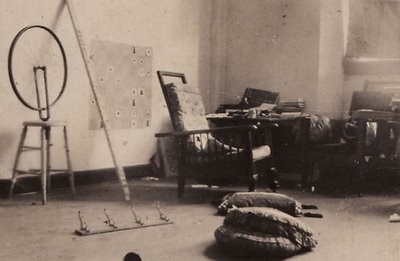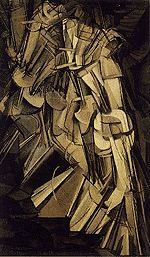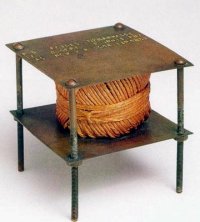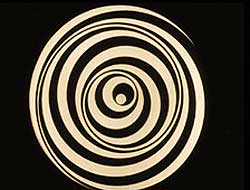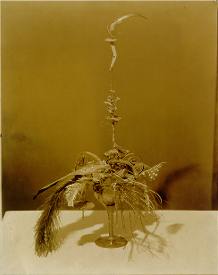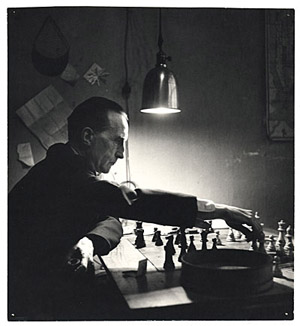Duchampian News & Views
-
Rose Selavy
January 3, 2009 Marcel Duchamp, Man Ray, and Francis Picabia all created female alter-egos at some point during their careers. In her article Marcel Duchamp and Man Ray: Dada in drag Joanna Pitman argues that all three of these alter-egos "related to their broadening concept of what it meant to be an artist', but Duchamp's was the most complex. Unlike Man Ray and Picabia, Duchamp created artworks, such as Why Not Sneeze Rose Selavy? (1921) and Fresh Widow (1920), under.. read more... -
Burghers of Zurich vote to support Dada birthplace
January 2, 2009"Voters in Switzerland’s business capital Zurich decided on Sunday to continue subsidizing the Cabaret Voltaire, the birthplace of the anarchic Dada movement."
read more... -
The Music of Marcel Duchamp
January 1, 2009 "Although Marcel Duchamp's musical oeuvre is sparse, these pieces represent a radical departure from anything done up until that time. Duchamp anticipated with his music something that then became apparent in the visual arts, especially in the Dada Movement: the arts are here for all to create, not just for skilled professionals. Duchamp's lack of musical training could have only enhanced his exploration in compositions. His pieces are completely independent of the preva.. read more... -
Work avoidance:
December 31, 2008 "[Duchamp's readymades] are objects for cleaning, hanging, storing, drying, preening, and peeing: objects whose purpose is to aid in self-presentation, objects that allow homes and offices to function. They are the unsung aids that allow us to do the work of maintaining house and body, so that we are better prepared to do our other work, like making art, for instance. But this was not the situation of these objects in Duchamp's studio: the hat rack was suspended from the.. read more...
the everyday life of Marcel Duchamp’s readymades -
Duchamp’s Persona
December 30, 2008 In her article Duchamp's Hidden Noise: A Lifelong Flirtation With Fame, Alice Goldfarb Marquis considers Duchamp's relationship to the media and the persona which he created for himself through interviews. Marquis asserts that "Duchamp worked harder at burnishing his persona than he ever did at creating art" and that he "established his image as art's bad boy" through his witty, "bizarre", and often contradictory statements to t.. read more... -
Marcel Duchmap/ Readymades
December 30, 2008"The strange thing about ready-mades is that I’ve never been able to come up with a definition or an explanation that fully satisfies me." [Marcel Duchamp] …Commentators have tried, but in vain. The elements have been covered by a scientific straight jacket whose thickness is even more surprising since the accounts from that era are rare and ambiguous."
read more... -
Some Experimental Piffles of the Silent Era
December 30, 2008The author reviews some experimental silent films, including Duchamp’s Anemic Cinema and Man Ray’s Le Retour a la Raison, and concludes that they are "piffles", interesting only within the larger context of the artists’ works.
read more... -
A Short Biography of the
December 29, 2008 "The Baroness Else von Freytag-Loringhoven (sometimes printed with another 'von' after 'Freytag') was one of the most bizarre characters seen in Greenwich Village during the '20s. In many ways the Baroness's life was so tragic and ridiculous that it is difficult to understand what interest Pound took in her. Until recently, very little was known of her day-to-day life. Since the publication of her autobiography by Paul Hjartarson and Douglas O. Spettigue in 1992, much mo.. read more...
Baroness Elsa Freytag-Loringhoven
including some of her writings -
Marcel Duchamp: A Game of Chess
December 29, 2008 "This film records an in-depth interview with Duchamp which took place five years before his death, at the time of his first ever one-man show (at the Pasadena Art Museum). It records for posterity Duchamp talking about his life, his ideas on art, why he chose to continue living in America after fleeing France in 1915, and why he virtually abandoned his work as an artist in 1923. An engaging dialogue takes place between Duchamp and film-maker Jean-Marie Drot as they go a.. read more...




